
Coney Island: Singapore's Serene Nature Escape
Explore Coney Island in Singapore, a serene nature retreat with pristine beaches, diverse wildlife, and eco-friendly initiatives, perfect for cycling, hiking, and relaxing.
Coney Island, also known as Pulau Serangoon, is a hidden gem located off the northeastern coast of Singapore. This tranquil island is a perfect escape from the bustling city life. It offers visitors a chance to reconnect with nature and enjoy a peaceful retreat. The island is home to a wide range of flora and fauna, including several species of birds, butterflies, and even a herd of Brahman cattle. The natural beauty of Coney Island is complemented by its well-maintained trails, making it ideal for cycling and hiking enthusiasts. One of the highlights of Coney Island is its pristine beaches, where you can relax and soak in the sun. The island's rustic charm is enhanced by its eco-friendly initiatives, such as the use of solar energy and environmentally friendly toilets. As you explore the island, you'll come across various interesting features, including a boardwalk that takes you through a mangrove forest and scenic viewpoints that offer breathtaking views of the surrounding waters. For those interested in history, Coney Island has a rich past dating back to the 1930s when it was privately owned by the Aw Boon brothers, known for their Tiger Balm brand. The island has since been transformed into a nature park, preserving its historical and natural heritage. Whether you're a nature lover, a history buff, or simply looking for a serene getaway, Coney Island in Singapore promises a unique and memorable experience.
Local tips in Coney Island
- Bring plenty of water and snacks as there are no shops or restaurants on the island.
- Wear comfortable shoes for walking or cycling along the trails.
- Visit early in the morning to avoid the heat and enjoy a quieter experience.
- Don't forget your camera to capture the island's scenic views and wildlife.
- Check the tide timings if you plan to explore the beaches.
- Respect the wildlife and follow the park's eco-friendly guidelines.
Coney Island: Singapore's Serene Nature Escape
Coney Island, also known as Pulau Serangoon, is a hidden gem located off the northeastern coast of Singapore. This tranquil island is a perfect escape from the bustling city life. It offers visitors a chance to reconnect with nature and enjoy a peaceful retreat. The island is home to a wide range of flora and fauna, including several species of birds, butterflies, and even a herd of Brahman cattle. The natural beauty of Coney Island is complemented by its well-maintained trails, making it ideal for cycling and hiking enthusiasts. One of the highlights of Coney Island is its pristine beaches, where you can relax and soak in the sun. The island's rustic charm is enhanced by its eco-friendly initiatives, such as the use of solar energy and environmentally friendly toilets. As you explore the island, you'll come across various interesting features, including a boardwalk that takes you through a mangrove forest and scenic viewpoints that offer breathtaking views of the surrounding waters. For those interested in history, Coney Island has a rich past dating back to the 1930s when it was privately owned by the Aw Boon brothers, known for their Tiger Balm brand. The island has since been transformed into a nature park, preserving its historical and natural heritage. Whether you're a nature lover, a history buff, or simply looking for a serene getaway, Coney Island in Singapore promises a unique and memorable experience.
When is the best time to go to Coney Island?
Iconic landmarks you can’t miss
Universal Studios Singapore
Experience the thrill of Universal Studios Singapore, where cinematic adventures come to life in a vibrant and entertaining theme park.

East Coast Park
Discover East Coast Park, a beautiful coastal haven in Singapore, perfect for outdoor adventures, relaxation, and enjoying local culinary delights.
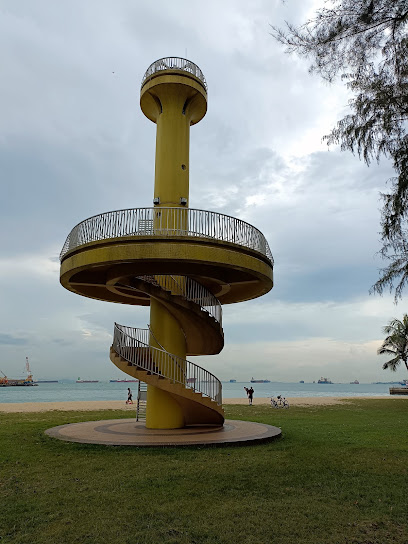
Fort Canning Park
Explore the lush landscapes and rich history of Fort Canning Park, a serene oasis and cultural landmark in the heart of Singapore.

Changi Beach Park
Discover the tranquil beauty of Changi Beach Park, where stunning coastal views meet lush greenery in Singapore's serene escape.

Haw Par Villa
Discover the vibrant world of Asian mythology at Haw Par Villa, Singapore's enchanting theme park filled with captivating sculptures and stories.

TreeTop Walk
Experience breathtaking views and the beauty of nature at Singapore's TreeTop Walk, a unique suspension bridge in the heart of a lush rainforest.

Punggol Park
Experience the tranquility of Punggol Park, a lush urban oasis in Singapore, perfect for picnics, recreational activities, and nature walks.

Punggol Waterway Park
Explore Punggol Waterway Park, where serene landscapes and vibrant activities create the perfect escape in Singapore's natural beauty.

Lower Seletar Reservoir Park
Explore the enchanting Lower Seletar Reservoir Park, a nature lover's paradise with scenic trails, wildlife, and serene waters in Singapore.

Lower Peirce Reservoir Park
Explore the natural beauty and tranquility of Lower Peirce Reservoir Park, a perfect retreat for nature lovers and outdoor enthusiasts in Singapore.

Yishun Dam
Experience stunning sunsets and serene strolls at Yishun Dam, a picturesque attraction perfect for nature lovers and tranquil getaways in Singapore.

Punggol Point Park
Discover Punggol Point Park, a serene waterfront oasis in Singapore perfect for relaxation, recreation, and stunning sunset views.

Lor Halus Red Bridge
Discover the stunning Lor Halus Red Bridge in Pasir Ris, Singapore—an architectural gem with breathtaking views and access to Coney Island's lush landscapes.

Jewel Bridge
Discover the beauty of Jewel Bridge in Punggol, where modern architecture meets nature in a breathtaking outdoor experience.

Serangoon Island
Explore the untouched beauty of Serangoon Island, a tranquil escape filled with lush nature, stunning beaches, and vibrant wildlife, perfect for all adventurers.

Unmissable attractions to see
Universal Studios Singapore
Experience the thrill of cinema at Universal Studios Singapore, where adventure awaits in every corner of the park!

East Coast Park
Discover the serene beauty of East Coast Park, a premier destination in Singapore for outdoor activities, dining, and relaxation by the beach.
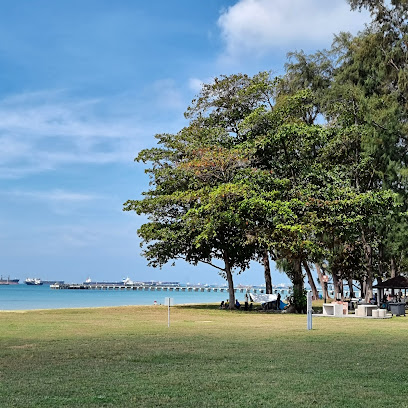
Changi City Point
Explore Changi City Point: Singapore's premier shopping destination with outlet stores, dining options, and entertainment for every traveler.

Bishan-Ang Mo Kio Park
Discover the tranquil beauty of Bishan-Ang Mo Kio Park, an expansive urban oasis in Singapore perfect for relaxation, recreation, and nature exploration.

MUSEUM OF ICE CREAM SINGAPORE
Explore the whimsical world of the Museum of Ice Cream Singapore, a delightful attraction for all ages celebrating the joy of ice cream.

Punggol Park
Discover the serene charm of Punggol Park, a lush haven for relaxation, family fun, and nature exploration in Singapore.

Sengkang Riverside Park
Explore the scenic beauty of Sengkang Riverside Park, a serene oasis in Singapore perfect for relaxation, recreation, and family fun.

Sands Theatre
Discover the enchanting world of performing arts at Sands Theatre, Singapore's premier venue for unforgettable shows and entertainment.

HSBC Rain Vortex
Discover the enchanting HSBC Rain Vortex, the tallest indoor waterfall, surrounded by lush gardens and shopping at Jewel Changi Airport, Singapore.

Former Ford Factory
Explore Singapore's poignant history at the Former Ford Factory, a museum dedicated to World War II narratives and the resilience of the human spirit.

Upper Seletar Reservoir Park
Experience the natural beauty of Upper Seletar Reservoir Park, a serene oasis in Singapore perfect for relaxation and outdoor activities.
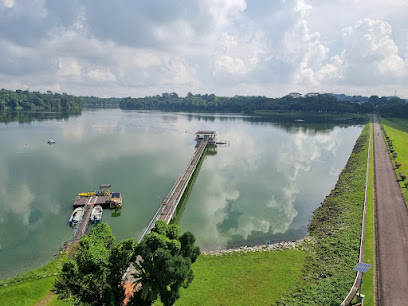
Sentosa 4D AdventureLand
Experience the thrill of 4D cinema and interactive rides at Sentosa 4D AdventureLand, Singapore's premier adventure destination.

Chek Jawa Wetlands
Explore Chek Jawa Wetlands, a serene nature preserve in Singapore, rich in biodiversity and scenic beauty perfect for eco-tourism and nature lovers.

Thomson Nature Park
Explore the lush landscapes and rich history of Thomson Nature Park, a serene nature preserve in Singapore perfect for all nature lovers and history enthusiasts.

Seletar Country Club
Discover the serene beauty and premium amenities of Seletar Country Club in Singapore, a perfect retreat for relaxation and recreation.

Essential places to dine
The Punggol Settlement
Discover The Punggol Settlement: A delightful seafood dining experience with stunning waterfront views in Singapore's charming coastal area.

Whisk & Paddle
Discover Whisk & Paddle in Punggol: A charming café offering delicious breakfasts and brunches amidst serene surroundings.

House Of Seafood 螃蟹之家
Discover the ultimate seafood dining experience at House Of Seafood in Punggol - where fresh catches meet delightful flavors.

White Restaurant (Waterway Point)
Savor authentic Chinese cuisine at White Restaurant in Waterway Point—an unforgettable dining experience in Singapore's vibrant Punggol district.

Uncle Leong Seafood (Punggol)
Discover the best Chinese seafood at Uncle Leong Seafood in Punggol - where freshness meets flavor in every bite.
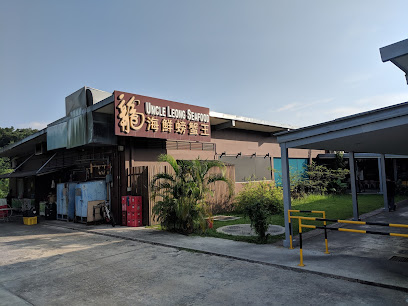
Orchid Live Seafood
Discover the ultimate seafood dining experience at Orchid Live Seafood in Singapore - where freshness meets flavor!
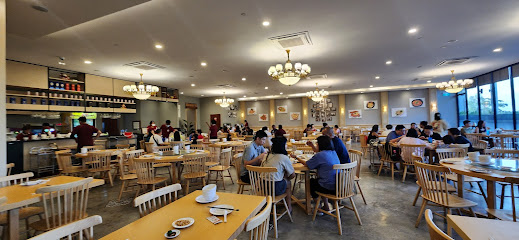
Frienzie Bar & Bistro
Discover the vibrant flavors at Frienzie Bar & Bistro in Punggol – where delicious grilled cuisine meets lively ambiance.

Punggol East Container Park
Explore Punggol East Container Park: A Unique Culinary Haven in Singapore with Diverse Dining Options and Vibrant Atmosphere.

Tenderbest Makcik Tuckshop @ Punggol East
Experience authentic Singaporean flavors at Tenderbest Makcik Tuckshop in Punggol East – where local cuisine meets warm hospitality.

Fat Po
Discover the flavors of Singapore at Fat Po Bistro—where culinary creativity meets serene riverside views.
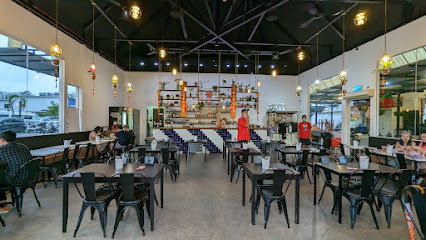
Ocean Restaurant
Experience fine dining like never before at Ocean Restaurant, where culinary excellence meets stunning underwater views in Singapore.

Anna's
Discover family-friendly dining at Anna's Cafe in Oasis Terraces - where delicious food meets warm hospitality in Singapore.

A&W Northshore Plaza
Experience the taste of nostalgia at A&W Northshore Plaza - your go-to fast food spot in Punggol with iconic burgers and refreshing root beer floats.

Leong Ji Kitchen
Discover the authentic taste of Singapore at Leong Ji Kitchen—a delightful hawker stall offering traditional dishes in Punggol.

Lau Wang Claypot Delights @ Punggol Oasis Terraces
Discover authentic Chinese and Singaporean cuisine at Lau Wang Claypot Delights, where every dish tells a story.

Markets, malls and hidden boutiques
Jewel Changi Airport
Discover Jewel Changi Airport: a breathtaking blend of nature and shopping in Singapore's iconic travel hub, featuring lush gardens, a stunning waterfall, and endless retail options.
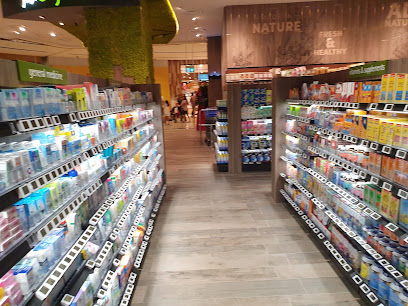
Happy Hawkers
Explore the diverse flavors at Happy Hawkers, a vibrant coffee shop in Punggol, where local meets international culinary delights.

The Tintin Shop
Explore The Tintin Shop in Chinatown, Singapore - a treasure trove of collectibles, gifts, and stationery for every Tintin fan.

Cat Socrates
Discover a whimsical gift shop in Singapore, Cat Socrates, where cat lovers find unique souvenirs and delightful treasures.

Two Of Us SG 二人世界
Discover unforgettable musical experiences and exceptional wedding planning services at Two Of Us SG, Singapore's premier entertainment agency.

Island Living
Explore Island Living in Singapore for premium furniture and unique home decor that transforms your living spaces into stylish havens.

East Inspirations Shop
Explore East Inspirations Shop in Singapore's Chinatown for unique antiques and furniture that embody rich cultural heritage.

Wheniwasfour
Discover unique souvenirs and handcrafted keepsakes at Wheniwasfour, the perfect spot to capture the spirit of Singapore.

The Amazing Grace Co.
Discover unique souvenirs and local artistry at The Amazing Grace Co., Punggol's charming gift shop in Singapore.

Coney Island (Beach Area C)
Discover the natural beauty of Coney Island in Punggol, a coastal paradise perfect for relaxation, adventure, and wildlife exploration.

Coney Island
Discover the natural beauty of Coney Island, Singapore, where serene beaches and lush hiking trails await every nature lover.
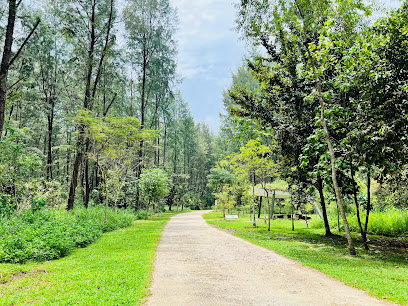
Coney Island Bridge
Explore the scenic Coney Island Bridge, a beautiful connection to nature in Punggol, offering breathtaking views and a tranquil escape.

Galeri Tokokita
Explore a unique blend of traditional and contemporary fashion at Galeri Tokokita in Singapore's Kampong Glam, where local artisans shine.

Coney Island Park
Explore Coney Island Park, a serene escape with lush landscapes, diverse wildlife, and peaceful picnic spots, perfect for tourists in Singapore.

Punggol Coney
Explore the serene beauty and rich heritage of Punggol Coney, a historical landmark offering breathtaking views and a peaceful escape into nature.

Essential bars & hidden hideouts
No.5 Emerald Hill
Discover the vibrant nightlife of Singapore at No.5 Emerald Hill, where expertly crafted cocktails and a lively atmosphere await.

Frienzie Bar & Bistro
Experience the vibrant atmosphere and exquisite flavors at Frienzie Bar & Bistro, a top grill restaurant in Punggol, Singapore.

HJ Bistro
Experience the vibrant fusion of live music and exquisite dining at HJ Bistro, a must-visit destination in Singapore's Punggol district.

georges by the Bay
Experience the best of Western and Asian cuisine at Georges by the Bay, a scenic bistro in Singapore's beautiful Punggol Settlement.

Jewel Music Box Punggol
Experience the thrill of karaoke at Jewel Music Box Punggol, where every night is filled with music, laughter, and unforgettable memories.

Southwest@Punggol Restaurant and Bar
Experience a delightful fusion of New American cuisine and a vibrant bar atmosphere at Southwest@Punggol in Singapore.

Pump Station 1965 Bar & Bistro
Experience a delightful fusion of flavors at Pump Station 1965 Bar & Bistro in Punggol, where great food meets a vibrant atmosphere.

Talk Cock Sing Song
Discover the heart of Singapore's nightlife at Talk Cock Sing Song, where vibrant karaoke and delicious cuisine create unforgettable memories.
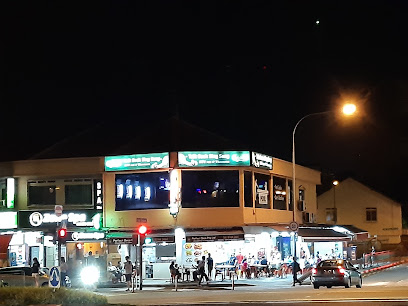
Tipsy Unicorn
Tipsy Unicorn: Experience the best beach club vibes in Singapore with stunning views, delicious food, and lively entertainment.

RELAX BAR
Discover Relax Bar in Punggol: A Korean bistro offering delicious cuisine and scenic views for an unforgettable dining experience.

Here Kitty Kitty - Speakeasy & Cocktail Lounge
Discover the hidden charm of Here Kitty Kitty, Singapore's premier speakeasy cocktail lounge, where innovative drinks and a vibrant atmosphere await.

Blueberry Hill Pub & Cafe
Discover Blueberry Hill Pub & Cafe: A cozy retreat in Singapore offering delicious food, refreshing drinks, and a warm atmosphere for relaxation.

B0JI0 Pub
Experience the vibrant nightlife of Singapore at B0JI0 Pub, where great drinks and a warm atmosphere await you.

The Bar Project (Punggol SAFRA)
Experience the vibrant nightlife at The Bar Project in Punggol SAFRA, where exceptional drinks meet a lively atmosphere.

Jade Hill Cafe Bar
Discover the perfect blend of cafe culture and wine indulgence at Jade Hill Cafe Bar in Bishan, Singapore, ideal for relaxing and socializing.
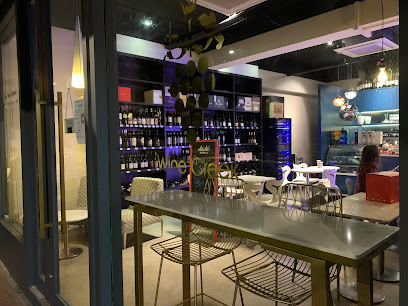
Local Phrases about Coney Island
-
- Hello你好
[Nǐ hǎo] - Goodbye再见
[Zàijiàn] - Yes是的
[Shì de] - No不
[Bù] - Please/You're welcome请
[Qǐng] - Thank you谢谢
[Xièxiè] - Excuse me/Sorry对不起
[Duìbùqǐ] - How are you?你好吗?
[Nǐ hǎo ma?] - Fine. And you?很好。你呢?
[Hěn hǎo. Nǐ ne?] - Do you speak English?你会说英语吗?
[Nǐ huì shuō yīngyǔ ma?] - I don't understand我不明白
[Wǒ bù míngbái]
- Hello你好
-
- I'd like to see the menu, please请给我看菜单
[Qǐng gěi wǒ kàn càidān] - I don't eat meat我不吃肉
[Wǒ bù chī ròu] - Cheers!干杯!
[Gānbēi!] - I would like to pay, please请给我付款
[Qǐng gěi wǒ fùkuǎn]
- I'd like to see the menu, please请给我看菜单
-
- Help!救命!
[Jiùmìng!] - Go away!走开!
[Zǒu kāi!] - Call the Police!报警!
[Bàojǐng!] - Call a doctor!叫医生!
[Jiào yīshēng!] - I'm lost我迷路了
[Wǒ mílù le] - I'm ill我生病了
[Wǒ shēngbìng le]
- Help!救命!
-
- I'd like to buy...我想买...
[Wǒ xiǎng mǎi...] - I'm just looking我只是看看
[Wǒ zhǐshì kàn kàn] - How much is it?多少钱?
[Duōshǎo qián?] - That's too expensive这太贵了
[Zhè tài guì le] - Can you lower the price?可以让价吗?
[Kěyǐ ràng jià ma?]
- I'd like to buy...我想买...
-
- What time is it?现在几点了?
[Xiànzài jǐ diǎn le?] - It's one o'clock现在一点
[Xiànzài yī diǎn] - Half past (10)十点半
[Shí diǎn bàn] - Morning早上
[Zǎoshang] - Afternoon下午
[Xiàwǔ] - Evening晚上
[Wǎnshang] - Yesterday昨天
[Zuótiān] - Today今天
[Jīntiān] - Tomorrow明天
[Míngtiān] - 1一
[Yī] - 2二
[Èr] - 3三
[Sān] - 4四
[Sì] - 5五
[Wǔ] - 6六
[Liù] - 7七
[Qī] - 8八
[Bā] - 9九
[Jiǔ] - 10十
[Shí]
- What time is it?现在几点了?
-
- Where's a/the...?请问...在哪里?
[Qǐngwèn... Zài nǎlǐ?] - What's the address?地址是什么?
[Dìzhǐ shì shénme?] - Can you show me (on the map)?可以给我看地图吗?
[Kěyǐ gěi wǒ kàn dìtú ma?] - When's the next (bus)?下一班(公交车)什么时候?
[Xià yī bān (gōngjiāo chē) shénme shíhou?] - A ticket (to ....)一张票(到...)
[Yī zhāng piào (dào...)]
- Where's a/the...?请问...在哪里?
History of Coney Island
-
Coney Island, also known as Pulau Serangoon, has a history dating back to the late 19th century. The island was originally owned by the Aw brothers, who were prominent figures in Singapore’s business scene. They were the founders of the Tiger Balm brand and sought to develop the island as a private retreat.
-
In the 1950s, Coney Island was purchased by an Indian businessman, Ghulam Mahmood, who envisioned transforming it into a resort. He named it 'Singapore's Coney Island,' drawing inspiration from the famous Coney Island in New York. Mahmood constructed a beach resort, complete with bungalows, a dance hall, and a restaurant, which became popular among locals for recreational activities.
-
In the 1970s, the Singapore government acquired Coney Island as part of its land reclamation efforts. The island was subsequently closed to the public, and plans for development were put on hold. For several decades, Coney Island remained largely untouched, allowing nature to reclaim much of the land.
-
In October 2015, Coney Island was officially reopened to the public as Coney Island Park. The National Parks Board (NParks) developed the island into an ecological park, emphasizing sustainability and conservation efforts. The park features a rich diversity of flora and fauna, and visitors can explore rustic trails, boardwalks, and beaches that highlight the island’s natural beauty.
-
Coney Island Park is home to a wide variety of wildlife, including over 80 species of birds, and numerous plant species. It serves as an important green space in Singapore, promoting biodiversity and offering a sanctuary for migratory birds. The park's design incorporates eco-friendly elements, such as solar-powered restrooms and benches made from recycled materials.
-
Today, Coney Island Park is a popular destination for both locals and tourists. It offers a range of recreational activities including cycling, bird-watching, and nature photography. The park is also a site for educational programs and guided tours that highlight its historical and ecological significance, contributing to the cultural enrichment of visitors.
Coney Island Essentials
-
Coney Island is located in the northeastern part of Singapore. The nearest MRT station is Punggol MRT Station (NE17), which is on the North-East Line. From there, you can take the bus service 84 from the Punggol Temporary Interchange to Punggol Point Park. The island's West Entrance is a short walk from the park. Alternatively, you can take a taxi directly to the West Entrance.
-
Once on Coney Island, the most common way to explore is on foot or by bicycle. The island features well-maintained walking and cycling paths. Bicycles can be rented from nearby Punggol Point Park. There are no motorized vehicles allowed on the island, ensuring a peaceful and eco-friendly environment.
-
The official currency in Singapore is the Singapore Dollar (SGD). Most transactions in and around Coney Island are cashless, with credit and debit cards widely accepted. However, it is a good idea to carry a small amount of cash for small purchases or in case of emergencies. ATMs are available at Punggol MRT Station and nearby shopping centers.
-
Coney Island is generally very safe for tourists. Singapore has low crime rates, but it is always advisable to take standard precautions. Keep an eye on your belongings, especially in crowded areas, and avoid exploring the island alone after dark. There are no specific high-crime areas targeting tourists in the vicinity.
-
In case of emergency, dial 999 for police assistance or 995 for medical emergencies. The nearest medical facilities are located in Punggol. It is advisable to have travel insurance that covers medical emergencies. For minor health issues, there are pharmacies in the Punggol area where you can purchase over-the-counter medications.
-
Fashion: Do wear comfortable and lightweight clothing suitable for outdoor activities. Don't forget to bring sunscreen and a hat to protect yourself from the sun. Religion: Do respect the local customs and traditions. If visiting places of worship nearby, dress modestly. Public Transport: Do be courteous and give up your seat to elderly passengers. Don't eat or drink on public transport. Greetings: Do greet locals with a smile and a handshake. Eating & Drinking: Do try the local delicacies in the nearby Punggol area. Don't litter; always use the provided bins to keep the environment clean.
-
To experience Coney Island like a local, visit early in the morning to enjoy the serene environment and catch the sunrise. Pack a picnic and enjoy it at the designated picnic spots. Birdwatching enthusiasts should bring binoculars, as the island is home to various bird species. Don't miss the chance to explore the hidden beaches and mangrove swamps for a unique natural experience.
Trending Landmarks in Coney Island
Nearby Cities to Coney Island
-
Things To Do in Yishun
-
Things To Do in East Coast Park
-
Things To Do in Sembawang
-
Things To Do in Singapore
-
Things To Do in Little India
-
Things To Do in Bugis
-
Things To Do in Marina Bay
-
Things To Do in Orchard Road
-
Things To Do in Clarke Quay
-
Things To Do in Bukit Timah
-
Things To Do in Chinatown
-
Things To Do in Johor Bahru
-
Things To Do in Sentosa
-
Things To Do in Jurong
-
Things To Do in Malacca









